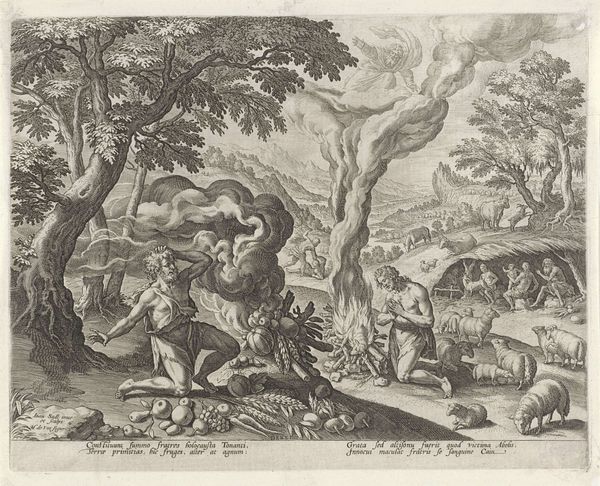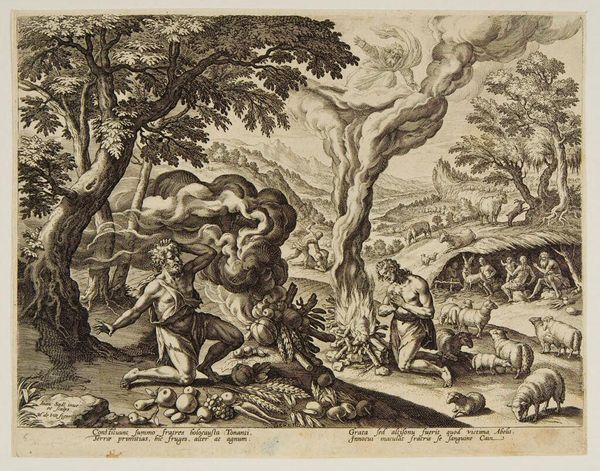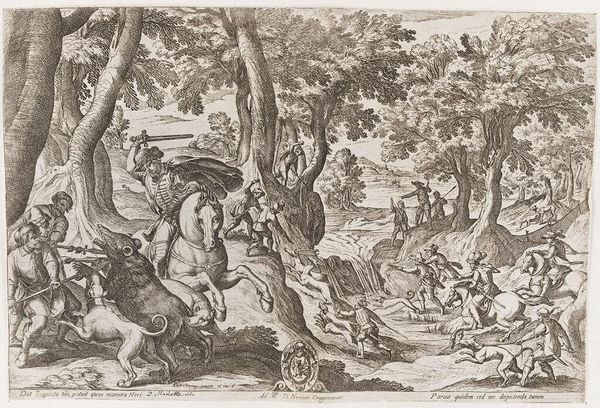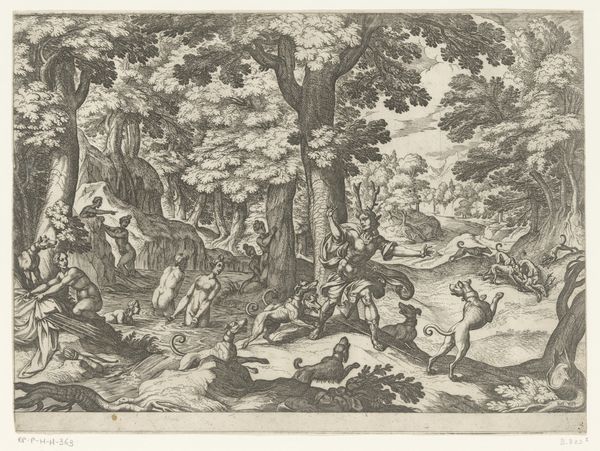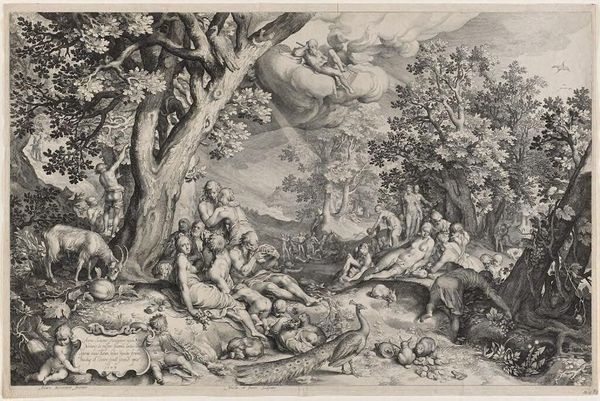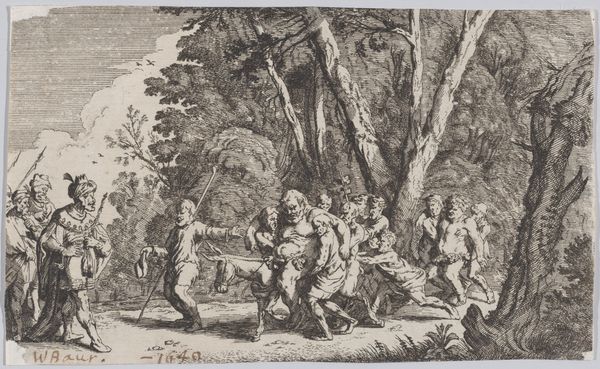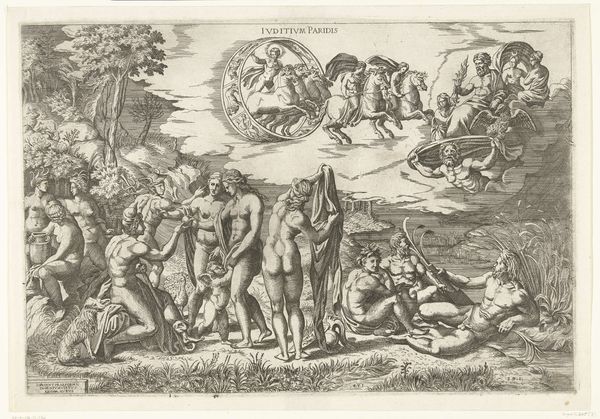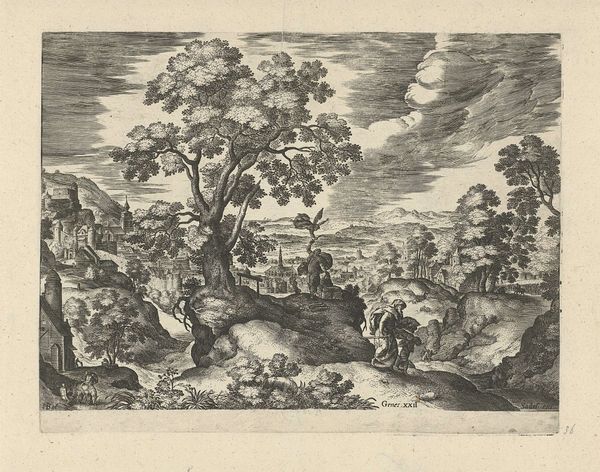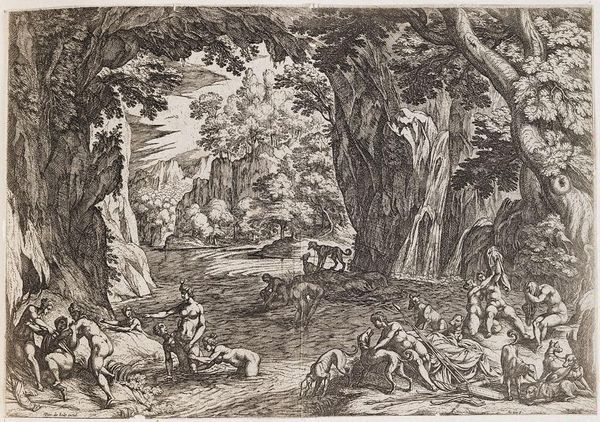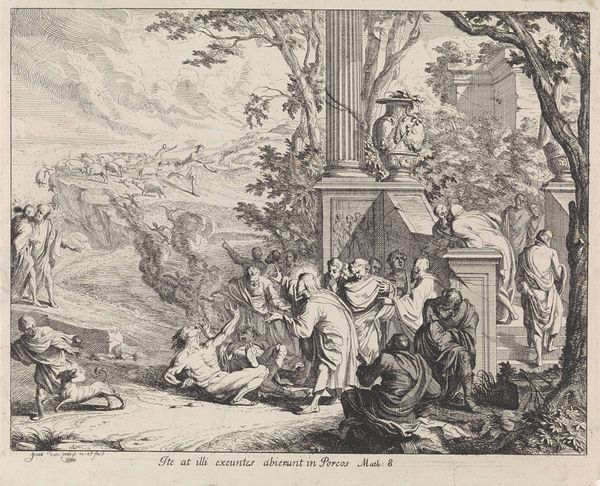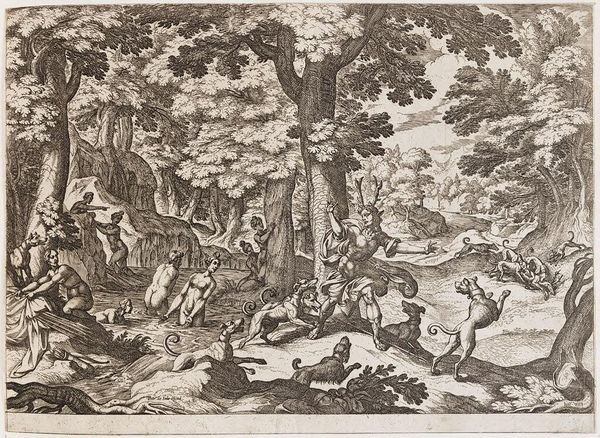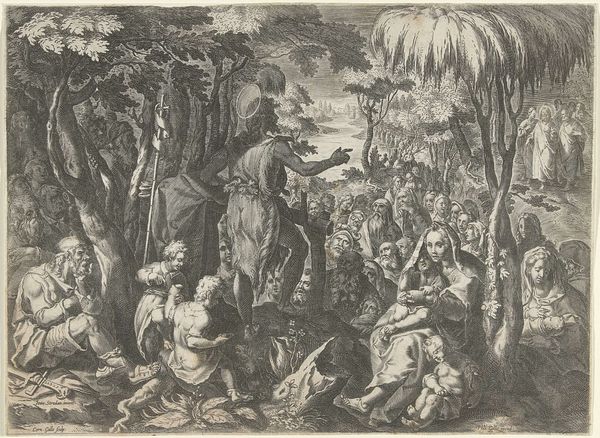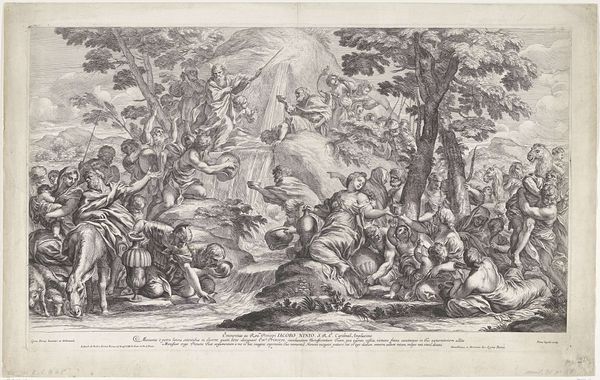
engraving
#
baroque
#
landscape
#
figuration
#
history-painting
#
engraving
Dimensions: height 146 mm, width 211 mm
Copyright: Rijks Museum: Open Domain
Editor: Looking at Paul van Somer II’s engraving, "Cephalus and Procris," created sometime between 1670 and 1697 and currently housed in the Rijksmuseum, I am immediately struck by its almost theatrical, stage-like composition. It feels very posed and artificial despite the natural setting. What's your interpretation of this work, particularly in its historical context? Curator: Well, consider the status of landscape art in the 17th century. It was gaining traction, yes, but often served as a backdrop for moralizing narratives. What does the narrative—the story of Cephalus and Procris—add to how the landscape is "read" by its viewers? The landscape here isn't just scenery; it's a stage for exploring themes of love, betrayal, and ultimately, death. These themes were heavily shaped by societal values and religious beliefs. Editor: So, the cherubs floating above the figures…are they there to add a religious or allegorical layer to this tragic narrative? Were these types of stories embraced because they provided a canvas for important discussions in society? Curator: Exactly! Think about how visual culture in the Dutch Republic was developing at this time. There was a rising merchant class, keen to display their erudition through artwork that signaled classical learning and moral instruction. Engravings like this were relatively affordable and circulated widely. Do you think this impacts its artistic merit, versus, say, a painting of the same subject? Editor: It makes me consider accessibility and the democratic role of art. The wider the audience, the greater the potential for these themes of morality to be engaged with on a social level. It's not just about the wealthy few dictating what's important. Curator: Precisely. So, it's not solely about aesthetics but about how images participated in shaping public discourse. Next time, maybe also question who created this print—and for whom? Editor: This exploration really reframes how I initially saw this staged scene. It highlights art's crucial role in reflecting, and shaping, social values, thanks!
Comments
No comments
Be the first to comment and join the conversation on the ultimate creative platform.

